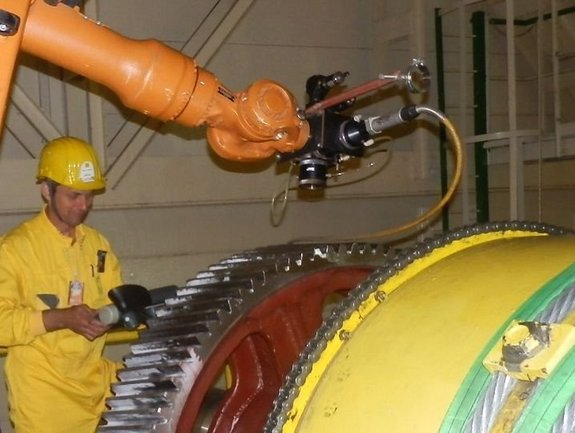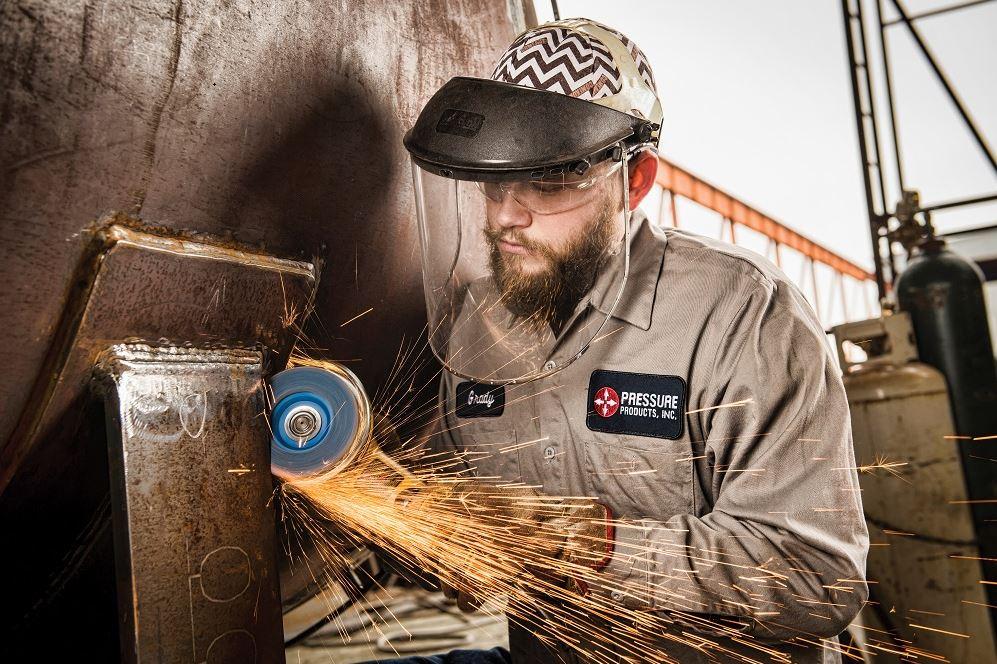Everything about Welding: Key Insights Into Techniques and Finest Practices for Success
Welding includes a range of techniques, each suited for particular materials and applications. Recognizing these approaches, such as GMAW, SMAW, and TIG, is important for attaining optimal results. The right devices and security practices can not be overlooked. As prep work and repairing play essential duties in the welding process, mastering these elements can significantly enhance the quality of the final product. What are the vital variables that assure an effective weld?
Recognizing Various Welding Strategies
Welding techniques incorporate a variety of approaches, each suited to certain applications and products. Amongst one of the most typical methods are Gas Steel Arc Welding (GMAW), Shielded Steel Arc Welding (SMAW), and Tungsten Inert Gas Welding (TIG) GMAW, additionally recognized as MIG welding, is popular for its speed and versatility, making it ideal for thin materials. SMAW, or stick welding, is preferred for its simpleness and effectiveness in exterior settings, especially with thicker metals. TIG welding supplies precision and control, making it suitable for intricate job and non-ferrous metals (Belgrade). Each technique has its one-of-a-kind advantages and factors to consider, permitting welders to pick the most effective method based on the project's needs, product type, and desired results. Comprehending these methods is necessary for successful welding
Necessary Welding Devices and Devices
While numerous welding techniques need details skills, the appropriate tools and devices are equally essential for attaining high quality outcomes. Important welding tools consists of welding makers, which vary depending upon the method-- such as MIG, TIG, or stick welding. Safety equipment, consisting of helmets, aprons, and gloves, assurances security and comfort throughout the procedure. On top of that, clamps and components assist protect materials in position, making sure precision in welds. Consumables like welding rods, wire, and securing gas are also vital elements that affect the high quality of the weld. Devices such as mills and cutters facilitate surface area preparation and post-weld completing, contributing to a professional end result. Purchasing high-grade tools inevitably boosts the performance and efficiency of welding projects.
Safety Practices in Welding
Proper safety techniques are crucial in the welding sector to secure workers from possible threats. Welders need to wear ideal individual protective tools (PPE), including safety helmets with appropriate shading, gloves, and flame-resistant garments. Ample air flow is vital to decrease direct exposure to hazardous fumes and gases produced throughout the welding procedure. Additionally, employees need to be educated in the appropriate handling of welding equipment to avoid accidents. Fire precaution, such as keeping combustible materials far from the welding location and having fire extinguishers conveniently available, are essential. Regular assessments of equipment and work spaces can help recognize prospective dangers before they cause mishaps. By sticking to these security techniques, welders can develop a more secure working environment and lessen risks associated with their profession.
Preparing Materials for Welding
Preparing products for welding is an essential step that substantially influences the high quality and honesty of the final product (Belgrade Fabrication). Proper preparation involves cleaning the surfaces to remove contaminants such as oil, dust, and corrosion, which can compromise the weld. Strategies such as grinding, fining sand, or making use of solvents are generally employed to attain a tidy surface area. In addition, making certain that the materials mesh snugly is necessary; spaces can cause weak welds. It's likewise essential to take into account the positioning and positioning of the elements, as this will certainly affect the simplicity of welding and the last end result. Finally, choosing the ideal filler product and guaranteeing compatibility with the base steels is important for accomplishing strong, sturdy welds
Tips for Achieving High-Quality Welds
Accomplishing high-grade welds requires focus to information and adherence to finest practices throughout the welding process. Appropriate joint preparation is essential, guaranteeing surfaces are clean and free from impurities. Choosing the ideal filler material and welding technique based on the base steels is critical for excellent bonding. Preserving consistent traveling speed and angle while welding can protect against defects and promote harmony. Furthermore, controlling warm input is essential; excessive heat can lead to bending and deteriorated joints. Consistently examining the welds throughout the procedure permits instant adjustments if required. Ultimately, utilizing appropriate post-weld treatments, such as cleansing and anxiety relief, can improve the resilience and honesty of the weld, eventually making sure a successful outcome.
Repairing Typical Welding Issues
Welding typically presents difficulties that can influence the quality and stability of the end product. Typical concerns such as porosity, irregular weld beads, and getting too hot can arise, each requiring details repairing strategies. Understanding these troubles is important for welders to improve their skills and accomplish perfect results.
Porosity Troubles Described
Although porosity can often be neglected, it remains a crucial problem in welding that can compromise the honesty of an ended up product. Porosity refers to the visibility of small gas pockets within the weld bead, which can weaken the joint and lead to premature failure. This issue normally occurs from impurities, wetness, or inappropriate securing gas protection throughout the welding procedure. To mitigate porosity, welders should verify that the base products are clean and dry, make use of proper securing gases, and keep consistent welding specifications. Regularly examining the devices and setting can likewise aid determine possible issues prior to go to the website they manifest in the weld. Dealing with porosity effectively is vital for achieving strong, durable welds that fulfill high quality criteria.

Inconsistent Weld Beads
Irregular weld grains can significantly impact the top quality and stamina of an ended up product. Different variables contribute to this concern, consisting of incorrect traveling rate, wrong amperage setups, and irregular electrode angles. When the welder relocates also swiftly, a grain might appear slim and do not have penetration, while moving as well gradually can create excessive accumulation. In addition, using the incorrect amperage can cause either undercutting or extreme spatter, both of which concession weld honesty. The welder's technique, such as irregular torch motion, can also cause unequal grain look. To minimize these troubles, welders should focus on maintaining stable, regulated movements and guaranteeing correct equipment setups to attain uniformity in their welds. Consistency is key to achieving solid and reliable welds.
Overheating and Warping Issues
Too much heat throughout the welding process can result in significant getting too hot and contorting problems, impacting the architectural honesty of the work surface. These troubles usually materialize as distortion, which can jeopardize placement and fit-up, making further assembly testing. Variables adding to overheating consist of the selection of welding parameters, such as voltage and take a trip rate, in addition to the kind of material being bonded. To minimize these issues, welders must keep regular traveling rate and suitable warmth input while monitoring the workpiece temperature. Furthermore, pre-heating or post-weld warm therapy can aid alleviate stresses triggered by rapid cooling - Montana Mobile Welding and Repair. Routine assessment and adherence to finest techniques are essential in avoiding overheating and ensuring the longevity and integrity of bonded structures
Often Asked Concerns
What Are the Profession Opportunities in the Welding Market?
The welding industry offers varied career chances, consisting of placements as welders, examiners, designers, and teachers. Experts can work in production, construction, aerospace, and automotive sectors, gaining from solid demand and affordable incomes in numerous functions.
How Can I Boost My Welding Speed Without Giving Up Quality?
To boost welding speed without sacrificing high quality, one should exercise efficient methods, maintain devices, maximize settings, and boost hand-eye coordination. Normal training and seeking helpful hints comments can also significantly contribute to achieving faster, premium welds.
What Accreditations Are Readily Available for Welders?
Various certifications exist for welders, including those from the American Welding Culture (AWS), the National Center for Building And Construction Education and Research Study (NCCER), and various industry-specific companies. These qualifications improve employability and show ability proficiency.
Exactly How Does Welding Affect the Features of Metals?
Welding influences the homes of steels by changing their microstructure, which can lead to modifications in ductility, toughness, and hardness. Warm input and air conditioning prices throughout the procedure significantly affect these material features.
Can I Bonded Dissimilar Metals With Each Other?
